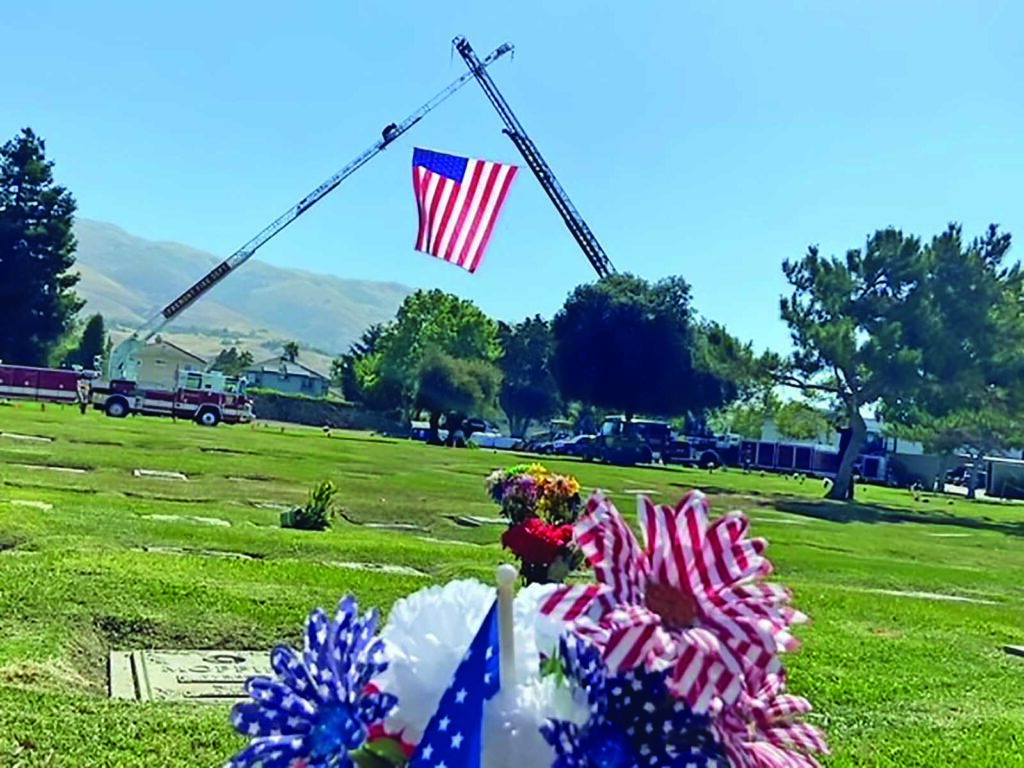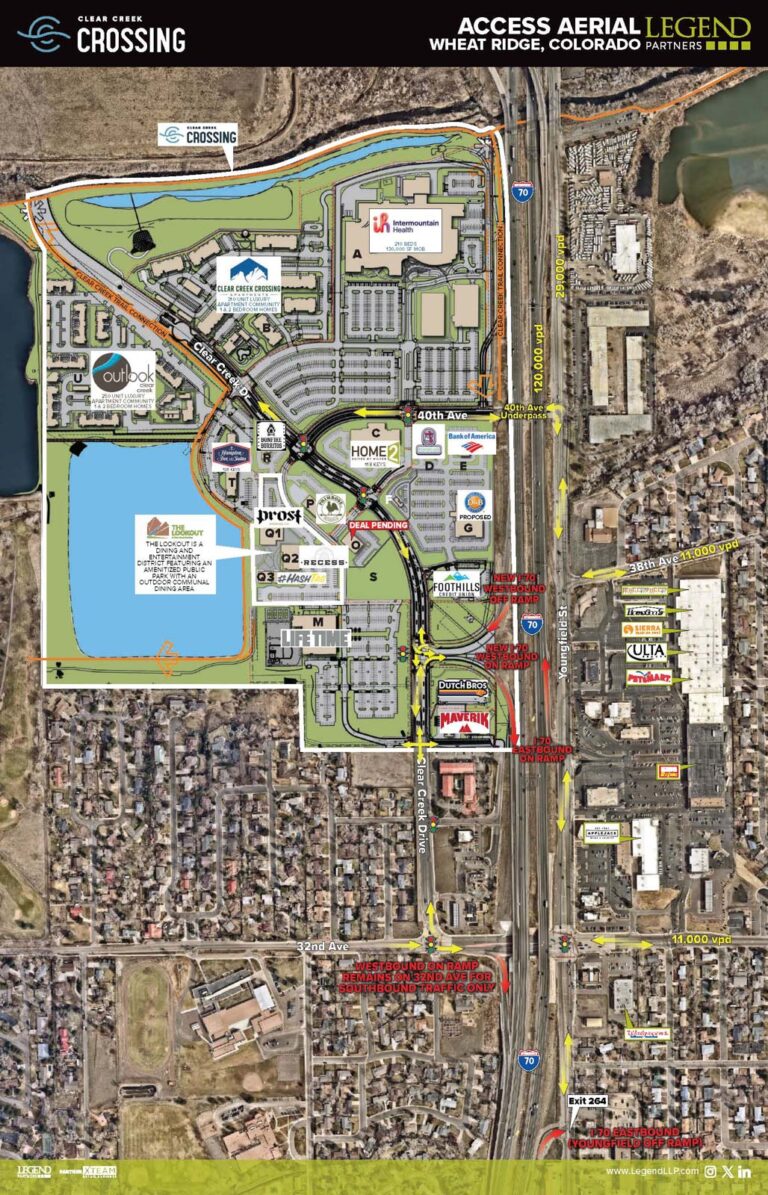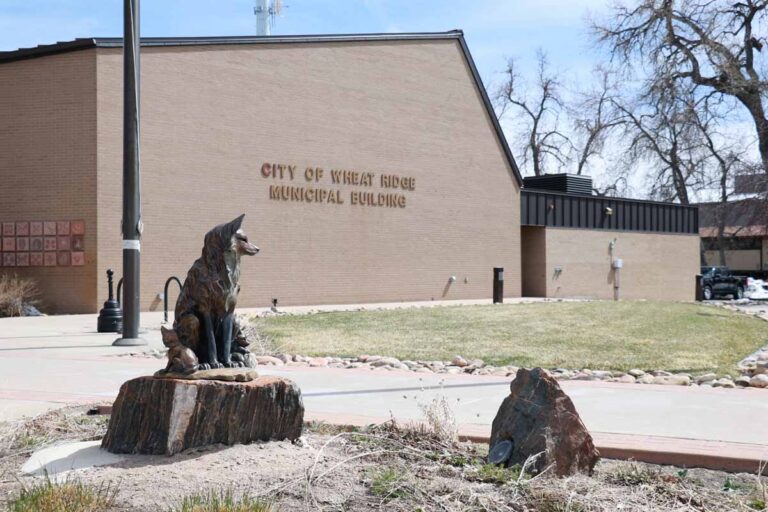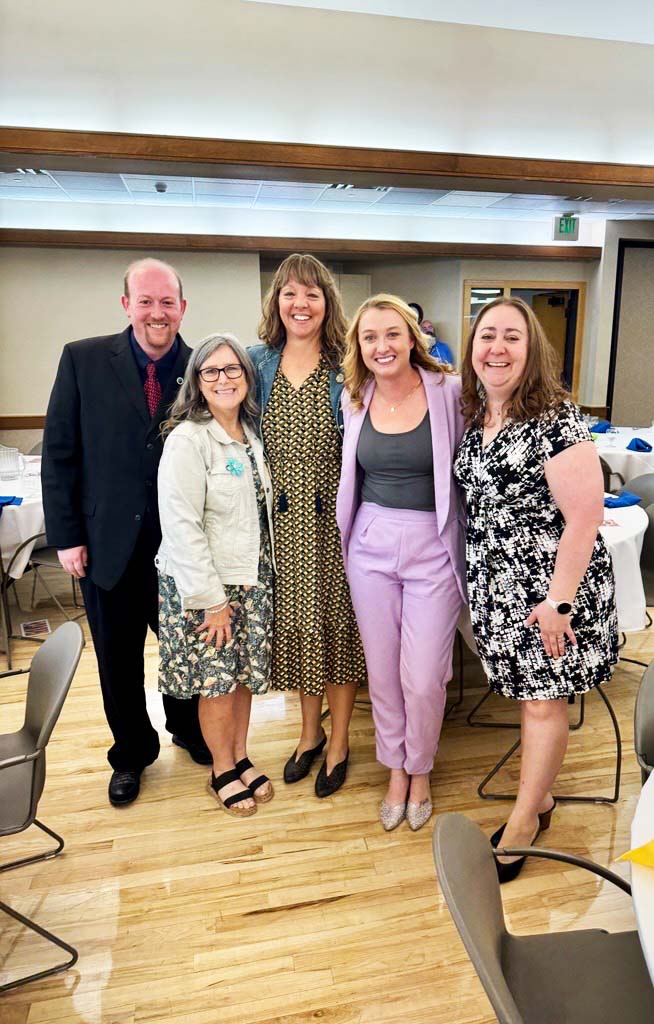Just like finding a specific grave on the-180 acre campus of Olinger Crown Hill Cemetery, trying to pinpoint focus for a column on Crown Hill is a challenge! The oldest graves lie in the northeast area, close to Wadsworth and 32nd Ave.
Look quick to the south while heading east on 32nd toward Wadsworth, and you can glimpse the back of a tall monument, the bronze statue of a uniformed soldier, surrounded by identical white marble headstones that mark 86 Union Civil War and 111 Spanish-American War veterans’ gravesites. The monument pays tribute to those who served in Cuba and the Philippines between the 1890s and early 1900s. The model for the statue was the son of a veteran of those battles. Dressed in his father’s uniform and campaign hat, Charles Blunt’s image reflects a typical soldier of that era; his father is buried directly next to the monument.
Not far away stands a flagpole of note. The 75-foot pole is actually a ship’s mast made of riveted curved steel panels. It was dedicated in 1911 as a “token of remembrance of the soldiers, sailors and marines of the Civil and Spanish-American Wars, who await the last reveille.” How the mast came to the cemetery remains a mystery. Depressions in the surrounding ground indicate the presence of several other burials that remain unmemorialized. Former Union and Confederate soldiers fought side-by-side in America’s next war 30 years later, thereby healing some of the harsh feelings.
This early section of the cemetery contains other fascinating burial sites. The first person interred was in 1908 months after the cemetery opened, when Augusta Garson and her daughter Mabel were moved from Fairmont Cemetery. Several fraternal organizations purchased plots for their members, including Knights of Pythias, Woodmen of the World, Masons and Gold Star Mothers.
Another group was the Grand Army of the Republic (GAR), formed by and for Union veterans of all military services in the Civil War. Its purpose was in “defense of the late soldiery of the United States, morally, socially, and politically”. Formed in 1866, by 1900 there were 400,000 members. The organization wielded great power in the Republican Party; five Presidents of the era were members. The group set up programs for veterans, widows and orphans, including funds for food and household goods, as well as medical, burial and housing expenses. Many of the programs were transferred to the federal government and evolved into the current Department of Veterans Affairs.
Join members and friends of the Wheat Ridge Historical Society for a Veterans’ Salute on Saturday, November 9, at the Baugh House (11361 W. 44th Ave.) from 10:00-2:00. We’ll honor their bravery and dedication at a recognition ceremony at 10:30. We’ve added a classic car show to the snacks, live music, and good conversation of past years. Baugh House tours are free. Learn the incredible story of Jeffco’s oldest continuously standing cabin, later encased in a farmhouse and forgotten until an arson fire revealed it again. Hear about that fire and the efforts to rebuild the structure into the historical gem it is today.






